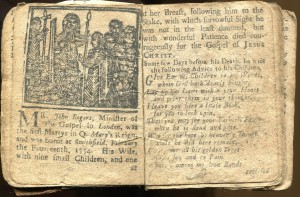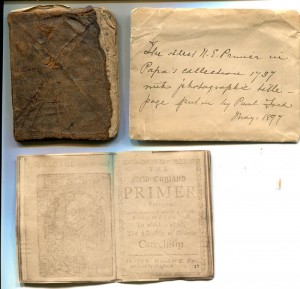As an independent researcher, writer and historian not affiliated with Trinity, I really appreciate the opportunity of using the Watkinson. My special area of interest is early 19th century education, and particularly the culture of the one-room schoolhouse. Exploring the collection of education materials originally developed by Henry Barnard has been a wonderful experience for me and tremendously helpful. Barnard (1811-1900), was a Hartford native, a prolific writer and an internationally recognized advocate for improvement of the public schools. He recognized the importance of looking to the past as a way of documenting our progress, and in this spirit developed an outstanding collection of early American schoolbooks, a collection now housed in the Watkinson Library. One special treasure that I’ve found is a 1737 edition of The New England Primer. The book is tiny; barely the size of my hand. It’s battered and missing several pages, but its significance is immense. This is one of the earliest known copies of what is arguably one of the most important books in American history. The New England Primer, in countless editions, dominated American education throughout the 18th century, and its influence remained strong until well after the Civil War. Several other 18th and early 19th century editions are included in the Library’s holdings. Looking at these The New England Primers today, we can appreciate, just as Henry Barnard intended, how far education has come since those early days.
With the book is an envelope, bearing the following note: “The oldest Primer in Papa’s collection 1737 with photographic title-page put in by Paul Ford May 1897”
The note was undoubtedly written by one of Henry Barnard’s five children, and “Paul Ford” must have been Paul Leicester Ford (1865-1902), an historian and novelist (and a fascinating figure in his own right), who published many works on early America, including The New-England primer; a history of its origin and development; with a reprint of the unique copy of the earliest known edition and many facsimile illustrations and reproductions (1897). The earliest known copy, dated 1727 and in very poor condition (these were literally read to death), is at the New York Public Library.
Tags: Visiting scholar

